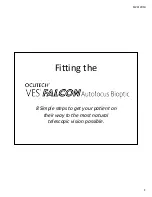
cloth can be moistened with an optical glass cleaning fluid and the lens wiped clean using very little
pressure. Do not use harsh detergents!
Make sure your telescope is always protected against dust and dirt.
After use, leave it in a warm room to dry off before storing.
Possible Objects For Observation:
Terrestrial Objects
Take note of the examples below, including Mount Rushmore and the golf course. Start with
the K20 mm eyepiece and focus until the image is clear. After
mastering the K20 mm eyepiece, switch to the K6 mm eyepiece
and practice scanning and focusing until the image is clear. Choose
several terrestrial objects to practice focusing on, but never point
your telescope at or near the sun, or you risk blindness.
The Moon
Diameter: 3,476 km
Distance: Approximately 384,401 km
The Moon is the Earth’s only natural satellite, and it is the second brightest
object in the sky (after the Sun). Although it is our closest neighbor, a lot
of people have never really taken a good long like at the Moon. With your
telescope, you should be able to see several interesting lunar features.
These include lunar maria, which appear as vast plains, and some of the
larger craters. The best views will be found along the terminator, which
is the edge where the visible and cloaked portions of the Moon meet.
6
Troubleshooting Guide:
Problem
Solution
No picture
Remove dust protection cap and sun-shield from the objective
opening.
Blurred picture
Adjust focus using focus ring.
No focus possible
Wait for temperature to balance out.
Bad quality
Never observe through a glass surface such as a window.
Viewing object visible in the finder, but not
through the telescope
Align finder to telescope (see instructions)
Despite using star diagonal prism the
picture is “crooked”
The star diagonal prism should be vertical in the eyepiece
connection.
f=K20 mm
f=K6 mm
The Moon
f=K20 mm
f=K6 mm
Terrestrial Images


























